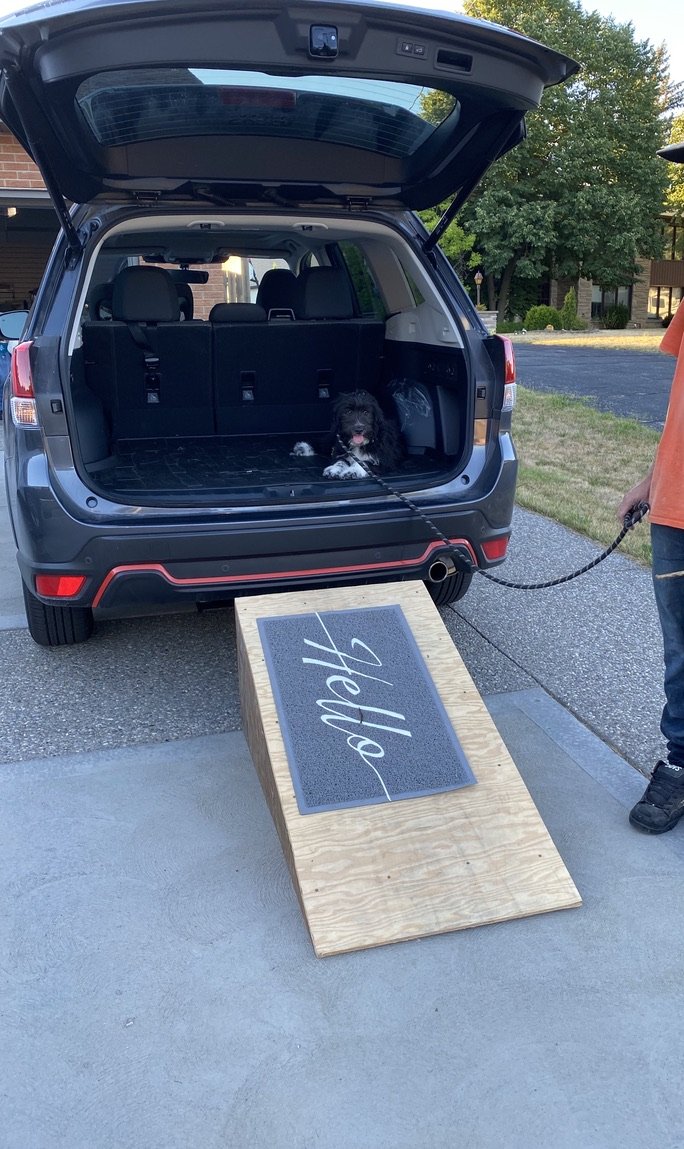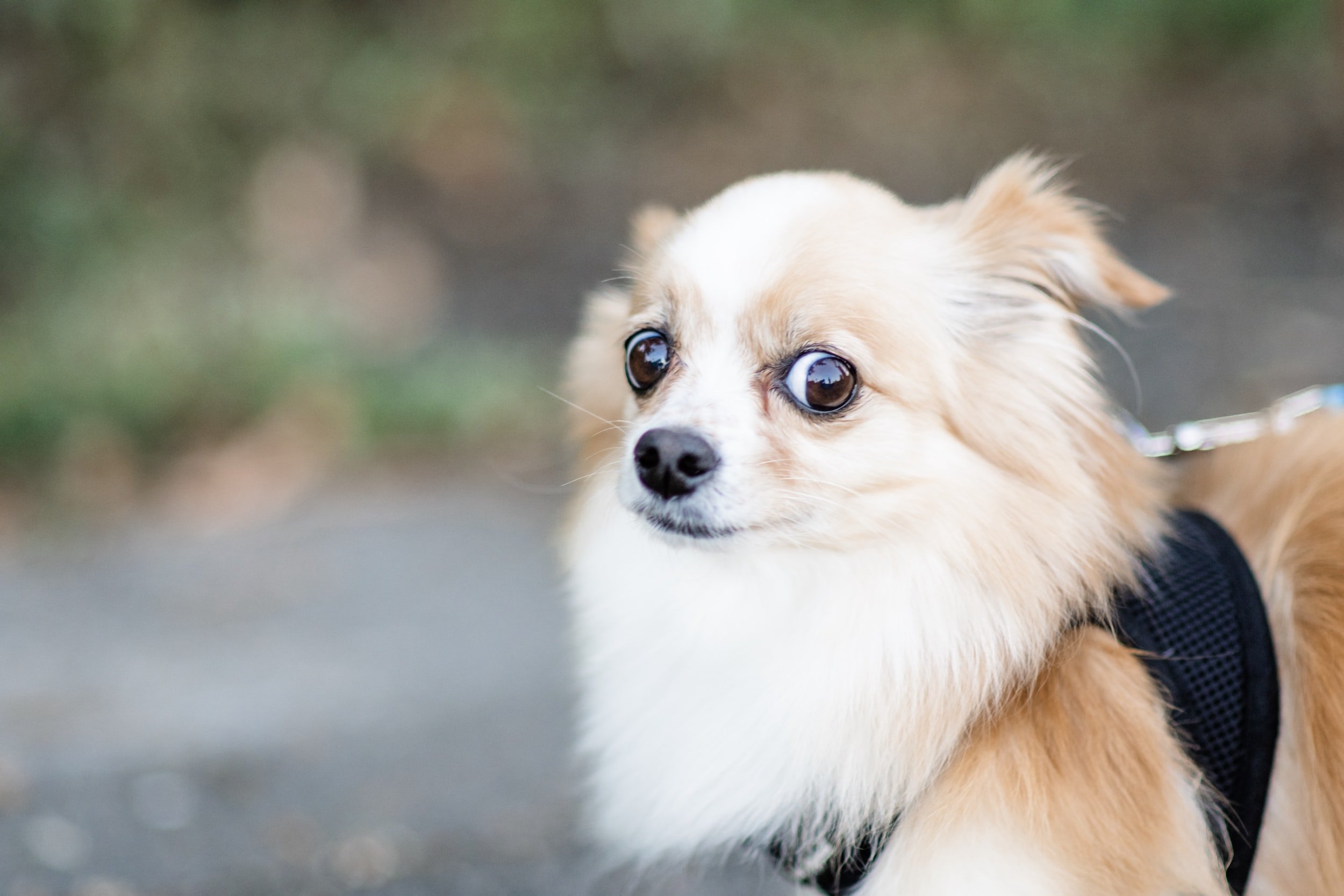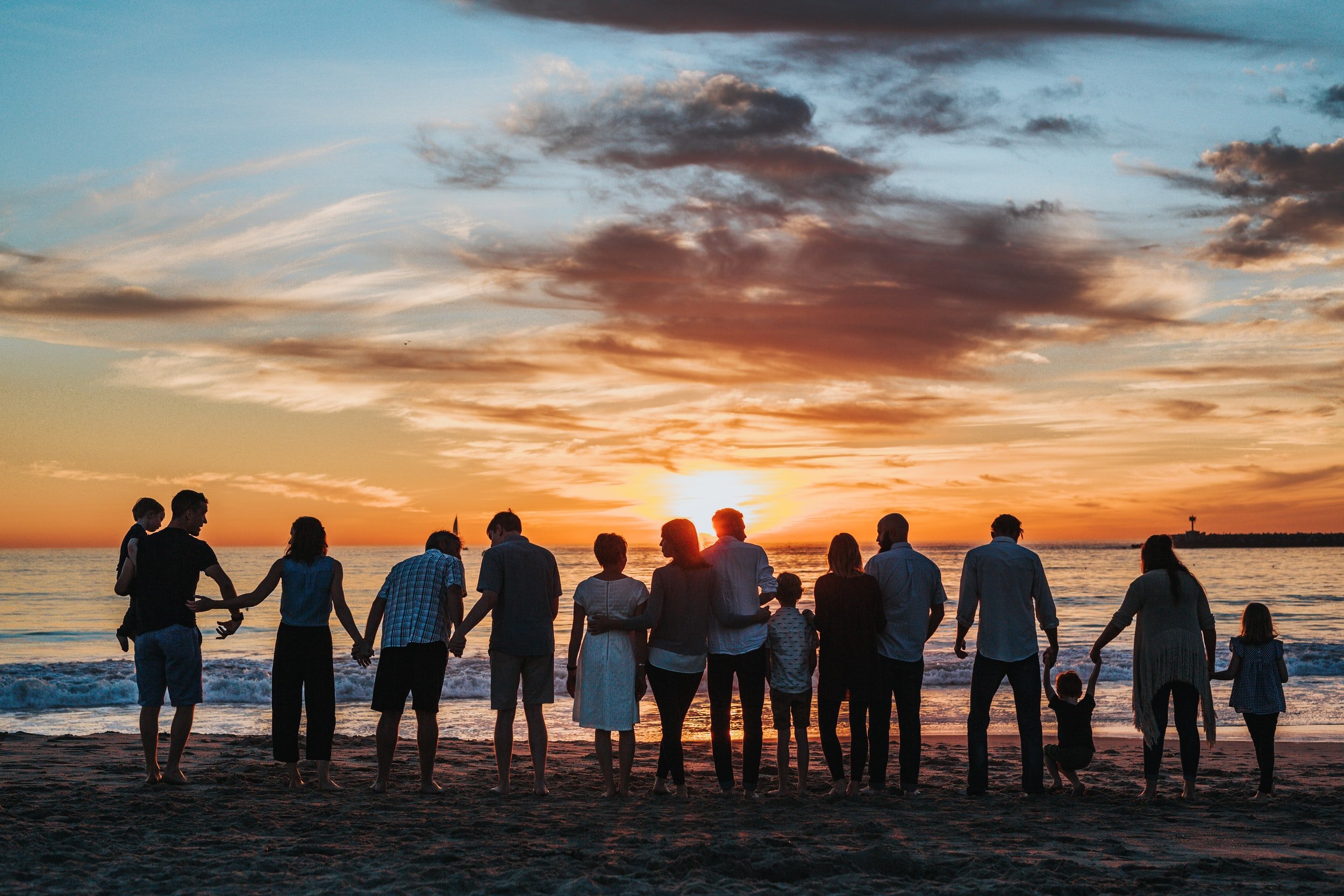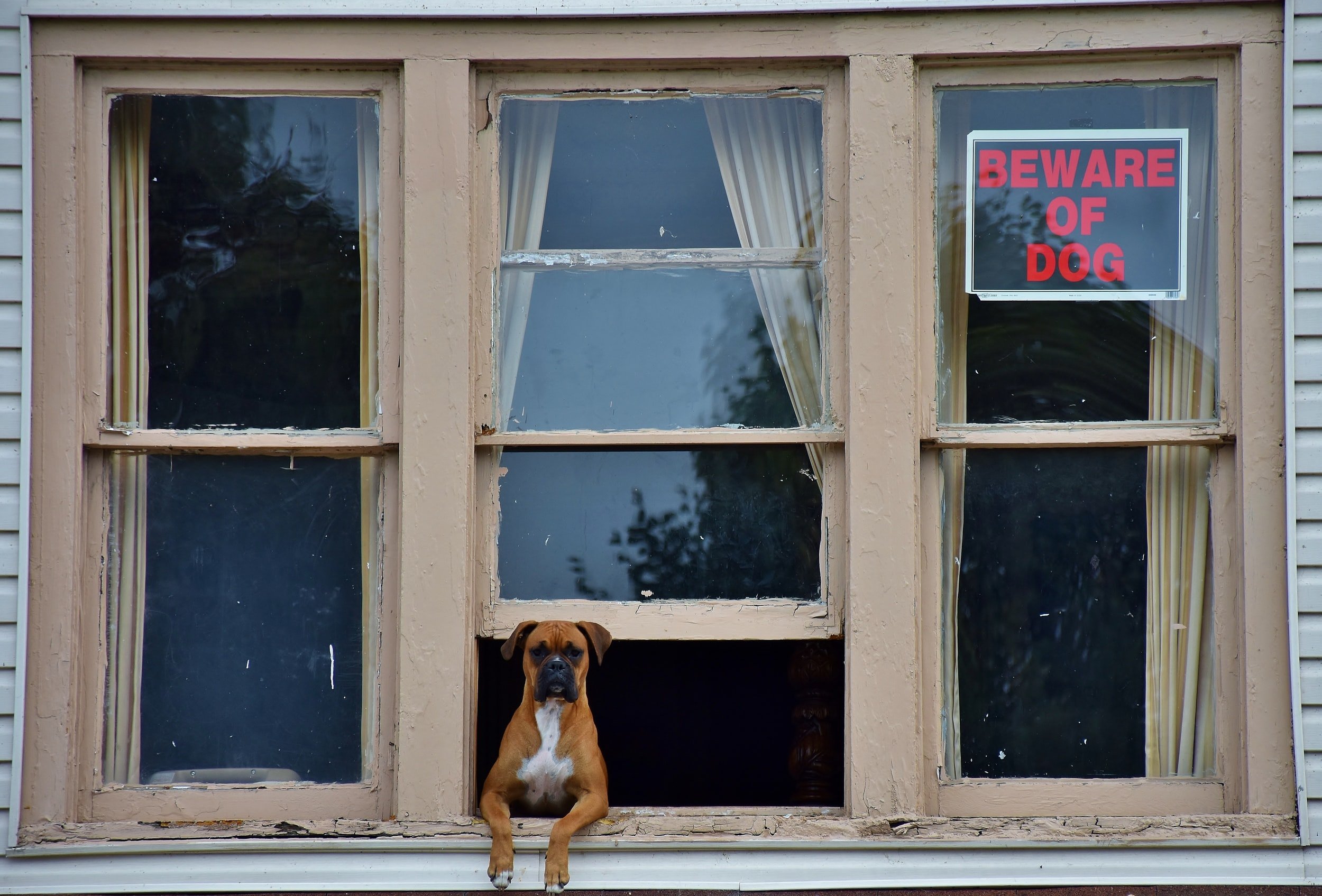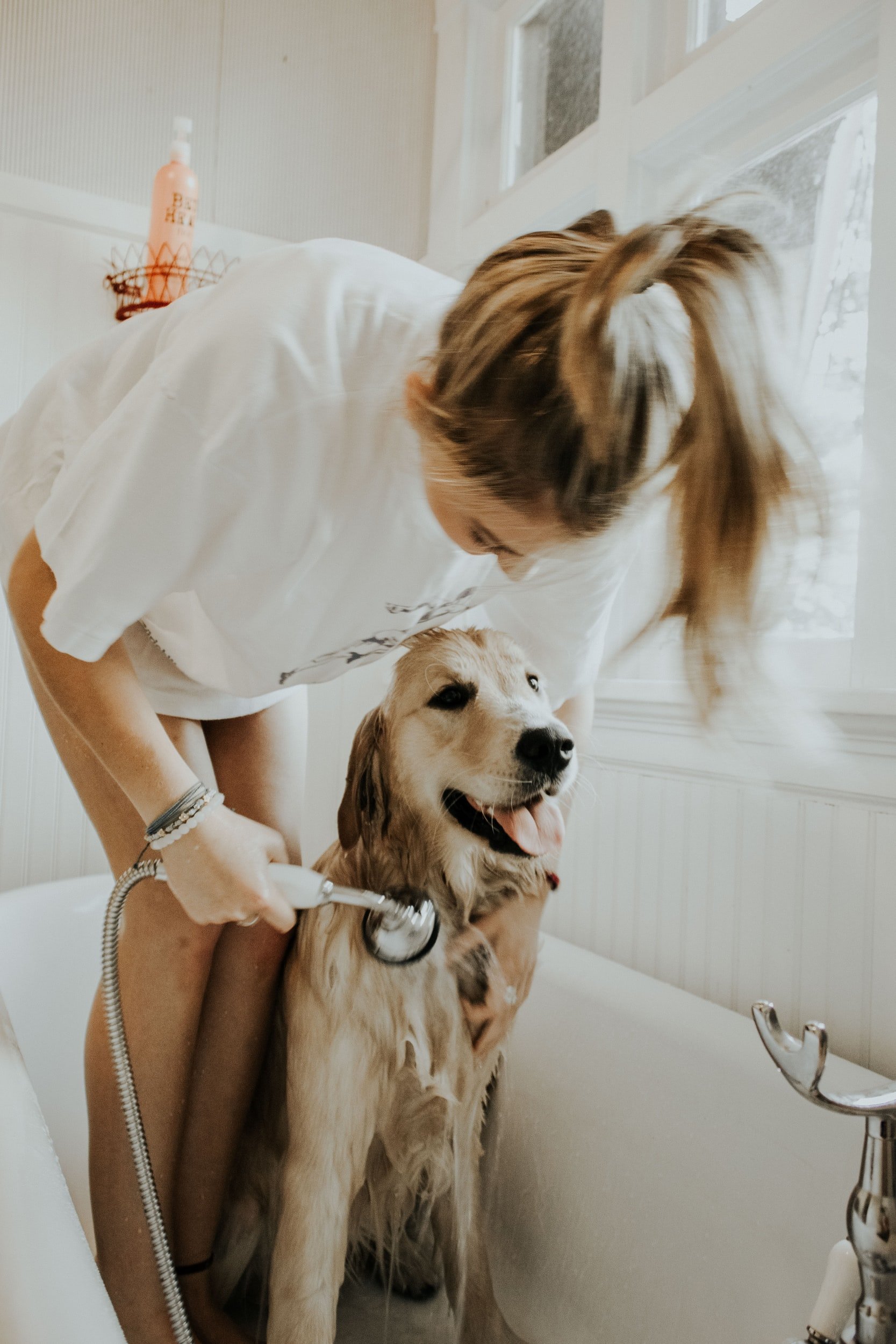Is your new puppy afraid of car rides? Read on for tips. (Photo: black pug in a red car)
Is your puppy afraid of car rides?
Do they hesitate to jump in?
Do you have to pick them up and force them into the car? Are you worried that your back won’t be able to handle this lifting once your pup grows up?
Does your puppy pant, pace, whine, and drool during the car ride?
Perhaps they also bark at people and other dogs they see while they’re in the car.
You’ve tried: petting them, talking softly to them, giving them treats, putting them on your lap, and reasoning with them (“please just lie down and be quiet.”) Nothing is working and you’re afraid that you’ve made a big mistake adopting this puppy because future car rides to the cottage and kid’s soccer games are looking grim.
How can you help them over their fear of the car?
First, take a deep breath. You can always begin again once you have the right tools.
Did you know that puppies need to be a part of the process of getting into the car? They need to get in themselves. This helps them feel less anxious because they are willingly going into the car, rather than being put into the car.
Pro Tip: Let your puppy get used to your car before adoption day (Photo: Magic the Rottweiler exploring our car two weeks before coming home with us from the breeder)
The next thing you need to know is going to help you with car training and with crate training, so get ready. Never close the door on an excited or anxious mind. Only close the door on a calm mind. Excited and anxious animals will naturally try to escape. They will vocalize and scratch at the door and become frustrated.
Wait until your puppy is calm before closing crate doors or car doors (Photo: Magic the Rottweiler at 8 weeks of age sleeping in her crate in the car)
Some puppies are big enough that they can jump into the car at eight weeks of age. Most will require a little bit of assistance finding their footing with their back paws. If you help them find their footing, rather than lifting their hind end, they will learn to enter the car independently very quickly.
10-month-old Norm was today years old when he learned how to jump in the car by himself. His owner’s back is no longer sore. (Photo: Norm the Pyrenees X Bernese mix in the back of a hatchback with his owner)
Ramps are a great tool to use, especially with smaller puppies. Your puppy can build confidence learning how to walk on a ramp as well as playing an active role of getting into the car.
Check out our IG, FB, and TikTok posts with Ozzy the Aussie-Doodle puppy. He was scared of car rides — even the beeping noise the hatch made when it closed. In the videos you can see the steps where we introduced him to two types of ramp and showed him that shutting the hatch was no big deal. Now, Ozzy can go to the vet, the groomer, and the kid’s soccer games without being stressed out.
Below are two photos of Ozzy that I took during our in-home training sessions.
Introduce the ramp slowly and have fun (Photo: Ozzy the Aussie-Doodle puppy exploring the ramp. His two front feet are on the ramp and he is sniffing a piece of kibble on the ramp.)
Ozzy relaxing in the car for the first time (Photo: Ozzy the Aussie-Doodle puppy lying down in the back of the family’s hatchback after bravely climbing the ramp.)
Ozzy’s owner hopes to do agility with him when he’s old enough. He can already go up and down a ramp. He’ll be a star! (Photo: Border Collie and his owner doing agility with an A frame)
Are you struggling with teaching your puppy or dog to love going into your car? Let us help you with in-home training sessions. Schedule your free call now. You deserve to drive around making happy memories with your puppy.
Let us help you enjoy calm car rides with your dog (Photo: Magic the Rottweiler (author’s dog) snoozing on her bed in the car)
Have a wonderful weekend, Dog Leaders!
Alyssa
Photos by: Priscilla Du Preez @priscilladupreez (black pug in a red car,)
Alyssa Foulkes (Magic the Rottweiler exploring our car two weeks before coming home with us from the breeder,) Alyssa Foulkes ( Magic the Rottweiler at 8 weeks of age sleeping in her crate in the car,) Alyssa Foulkes (Norm, the Pyrenees X Bernese mix in the back of a hatchback with his owner,) Alyssa Foulkes (Ozzy the Aussie-Doodle puppy exploring the ramp. His two front feet are on the ramp and he is sniffing a piece of kibble on the ramp.) Alyssa Foulkes (Ozzy the Aussie-Doodle puppy lying down in the back of the family’s hatchback after bravely climbing the ramp.) Melissa Whitecross @furtography_za (Border Collie running doing agility with an A frame,) Alyssa Foulkes (Magic the Rottweiler (author’s dog) snoozing on her bed in the car.)










